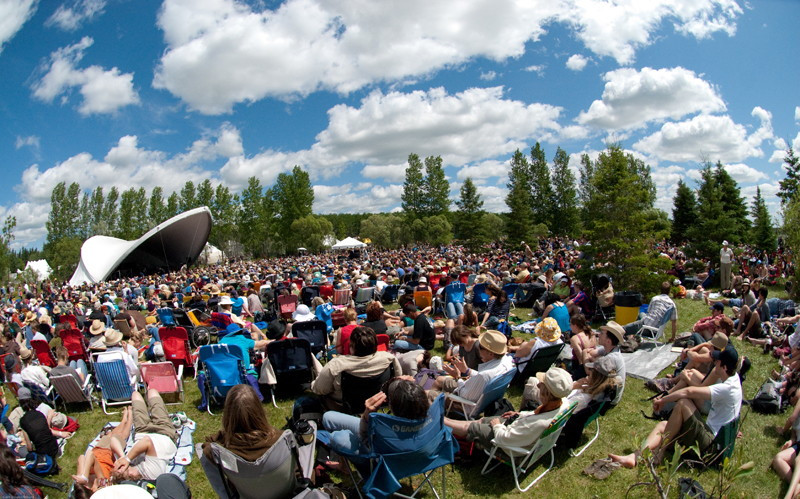Grassroots growing
As the Winnipeg Folk Festival continues to grow, organizers are looking for ways to keep its tradition
How can you not love an event with drum circles?
The Winnipeg Folk Festival started out in 1974 as a small three-day music festival held at Birds Hill Park with 22,000 attendees. It has since grown into an important Winnipeg tradition and a year-round arts organization offering events as well as education and outreach programs.
Folk Fest now welcomes 70,000 attendees and contributes significantly to Winnipeg’s economy each year, but with the increasing expansion and popularity of the festival, organizers must find new ways to accommodate its growth.
“The event has become something that people plan for and plan to attend every year to spend time with friends and family,” said Margaret Koshinsky, marketing and communications manager for the Winnipeg Folk Festival.
“Our primary audience comes for the experience. They expect the music to be great and they’re coming regardless; they buy (tickets) before the line-up is announced.”
A campaign started in 2010 called Staging the Future has been organized as a long-term solution proposing a three-phase plan to allow for Folk Fest’s expansion.
Koshinsky says the plan is currently in the process of being re-phased, due to various factors such as weather, construction time and funding, but that the goal is to increase capacity and maintain experience.
“We want (people) to feel that it is not a crowded event,” she said of the plans for new stages and creating better sight lines to the stage for audiences.
An attendance cap was implemented once organizers realized the Birds Hill Park site had reached its capacity. Campground passes sell out earlier each year, but are necessary to maintaining the experience of the event.
Carolyn Basha, director of the Staging the Future campaign, explains that signing a long-term lease with Birds Hill Park was key to making the necessary improvements for the sustainability of the festival, allowing organizers to more efficiently improve pathways, navigation and safety at the site.
“Overarching all of the changes and improvements is (the importance of) doing it in a way that will respect the natural qualities of the site,” said Basha.
The festival has a 400-person environment crew that takes care of recycling and composting, while food vendors use reusable plates, compostable beverage cups and lake-friendly dish soap.
A green bike ride to Birds Hill Park was first coordinated last year and will become an annual event in order to lower the festival’s environmental impact. Participants are rewarded with priority entrance to the campground, giving festival-goers more initiative to leave their cars parked.
“We’re still holding on to our environmental values in a very strong way,” said Basha.
The festival is often associated with partying and drug use, but Koshinsky says that, according to their research, most people who make this association have never actually attended the festival.
“We absolutely have a zero tolerance at the festival, ... but we police it in a passive way that may not be visible,” she said.
The Winnipeg Folk Festival is a valuable asset not only to Winnipeg’s community, but to its economy as well. Tourism Winnipeg estimates that the festival has a $14.1 million impact on Winnipeg’s GDP and generates $25 million in economic activity, while creating 244 jobs in Manitoba.
“The mission hasn’t changed since the first event and I would say philosophically it hasn’t changed, but certainly the festival has grown from the grassroots initiative,” said Koshinsky.
Published in Volume 65, Number 25 of The Uniter (March 31, 2011)







